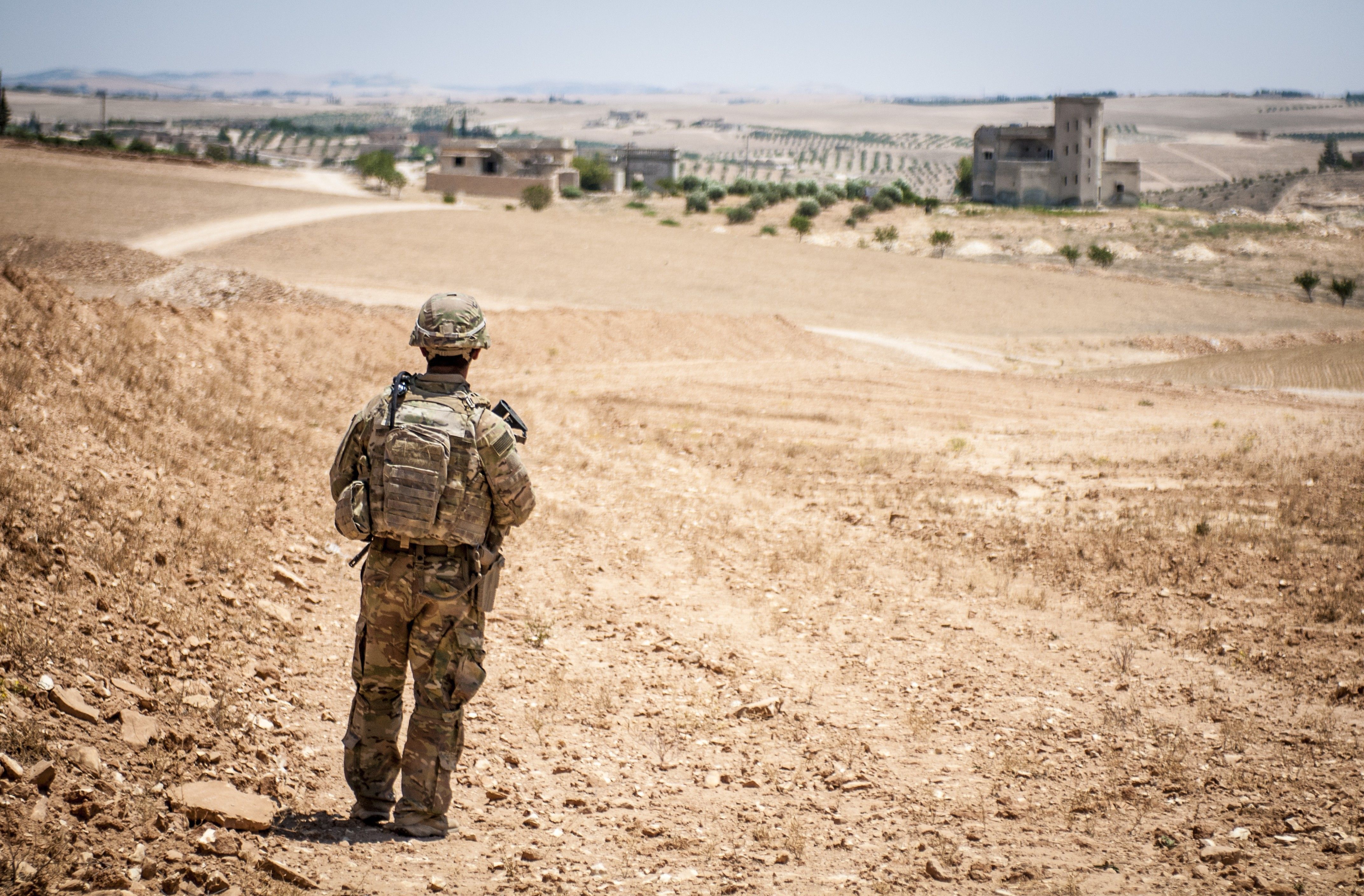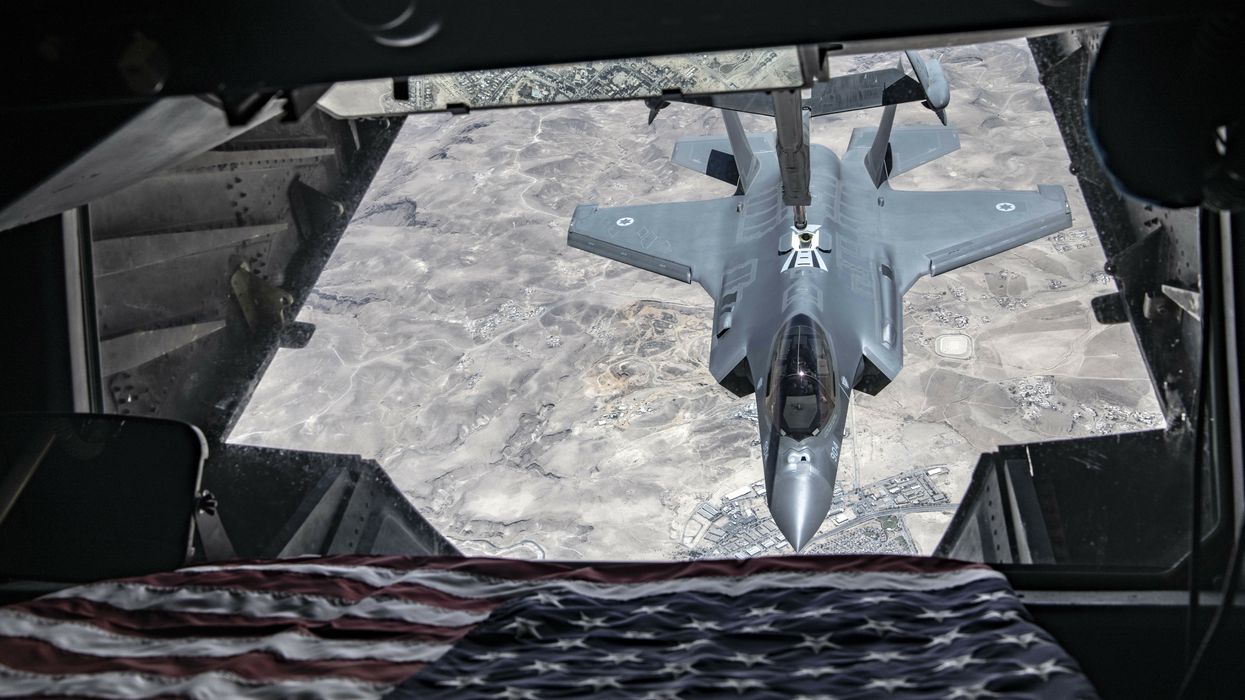Roughly ten years ago, the Islamic State in Iraq and Syria, or ISIS, swept across Mesopotamia. At its peak, it controlled large swathes of Iraqi and Syrian territory, equivalent in size to Great Britain, subjecting more than 10 million people to its brutal governance. Although the “caliphate” lost its state apparatus years ago, ISIS remains a destructive force by operating sleeper cells and waging deadly ambushes in Iraq and Syria.
The remnants of ISIS have recently been conducting hit-and-run attacks in the Syrian governorates of Deir Ezzor, Homs, and Raqqa. The targets have been the Kurdish-led Peoples’ Protection Units (YPG), the Syrian Arab Army (SAA), and Iran-backed militias aligned with President Bashar al-Assad’s government, including the Afghan Shi’a Fatemiyoun Brigade.
ISIS continues posing a “considerable threat in Syria,” Danny Makki, an analyst covering Syria, told Responsible Statecraft. “The group maintains the capacity to conduct deadly guerrilla attacks and sabotage operations which, despite the group’s diminished presence, have inflicted significant loss of life on Kurdish and Syrian government areas in the country.” ISIS, Makki explained, does “not operate out of a specific area — there’s no big town or base they have, so it’s a difficult war to fight [against] them.”
Al-Sukhnah, located in the Homs Governorate of Eastern Syria, is a strategic town that has repeatedly been the target of ISIS attacks. According to Makki, ISIS has recently come close to capturing it. A year ago, ISIS waged its deadliest terrorist attack since January 2022, slaughtering 53 Syrians who were gathering desert truffles near al-Sukhnah. In the Homs Governorate, ISIS forces killed at least 14 SAA soldiers near the ancient city of Palmyra just last month.
Debating the U.S. military presence
The possibility of an ISIS resurgence cannot be discounted given the growing instability caused by the expansion of Israel’s war on Gaza throughout the Levant with escalating tit-for-tat attacks between the U.S. military and Iran-aligned groups in both Syria and Iraq. Amid debates in Washington about the future of the U.S. military presence in Syria, ISIS-related factors — along with U.S. interests in countering Iranian and Russian influence in the Middle East while keeping the Assad regime weak — are given weight.
A concern raised by many officials in Washington is the possibility that a withdrawal of the roughly 900 U.S. troops in Syria could result in an explosive comeback by ISIS. Whether such concerns are valid or not is debatable. Nonetheless, given the botched withdrawal from Afghanistan in August 2021, the Biden administration does not want the departure of U.S. military forces from another country to end in a takeover by violent extremists.
“The ISIS-related detention and displacement sites under Kurdish control represent a significant, latent threat,” said Mona Yacoubian, a senior adviser at the US Institute of Peace.
“If the Kurds for some reason — for example, if they come under major Turkish attack or should the US withdraw from Syria — are no longer able to maintain control of those sites, ISIS would virtually overnight burst back onto the scene as a powerful force,” Yacoubian told RS. “The ISIS detention sites alone hold some 10,000 ISIS fighters, a veritable ‘ISIS army in detention’ which could quickly pose a major threat to global interests if they break free.”
“If you suddenly see thousands of hardened Islamic State fighters being set free [from Kurdish-controlled prisons], then yes, you’re going to have a problem in these areas very soon,” agreed Aron Lund, a fellow at Century International who focuses on Syria.
Yacoubian’s view is that the U.S. military presence in Syria has “been a victim of its own success.” By maintaining a military footprint in the country, which has cost the U.S. relatively little in terms of blood and treasure, Washington has “enabled a strong Kurdish partner force that has been able to help stabilize the area and most importantly guard and control ISIS-related detention and displacement sites.”
“This unsung success has essentially gone under the radar,” argued Yacoubian. It ultimately amounts to “an instance where the absence of something happening, i.e. major ISIS resurgence, is the success. It is famously difficult to tout a non-event as a success!”
Other experts, however, reject this idea that the continued U.S. occupation of roughly one-third of Syria’s territory has made the country or the region safer from ISIS.
The argument that ending the U.S. military presence in Syria would somehow empower ISIS is “absolutely ludicrous,” charges Karim Emile Bitar, who teaches international relations at Saint Joseph University of Beirut.
“Those who peddle these sorts of arguments seem to have been living on another planet for the past 30 years,” Bitar argued. “We now have plenty of evidence that whether in Iraq or in Syria [...] the presence of U.S. forces on the ground is actually what empowers and enables these groups and feeds their propaganda.”
The Lebanese scholar pointed to Barack Obama’s 2015 interview with VICE News in which the then-U.S. president asserted that ISIS was a direct successor of al-Qaeda in Iraq, which itself blossomed as a result of the 2003 U.S. invasion and occupation. Obama called it a salient example of unintended consequences and urged foreign policymakers in the future to aim before shooting.
There is much to say about the responsibility of the George W. Bush administration’s disastrous invasion of Iraq for ISIS’s formation and rise. But one must also recognize that the way in which the U.S. would withdraw from Syria, if it so decides, matters. Among other questions to be addressed are, which local actors would Washington coordinate the pull-out with? And what would such coordination look like?
“There’s a serious risk of short-term disruption and conflict, should the United States withdraw without adequate arrangements with other actors in the region,” according to Lund. “Changing a long-established status quo is always risky, even if it’s an unsatisfying status quo—or even a really bad one.”
“Should the current security architecture collapse, such as after a U.S. withdrawal, it’s likely that the Islamic State would exploit that and gain in power and influence,” he added. Lund also noted that a “meteoric rise of the 2013, 2014 kind does not look likely at all, because so much has changed, and people are now aware of the problem.”
There are undoubtedly many compelling arguments as to why the U.S. military should exit Syria. But coordinating this withdrawal with local actors will be key if ISIS is to be denied the chance to exploit chaos, which the group has historically done very effectively.
- Bring US troops home from Iraq and Syria now ›
- US troops in Iraq and Syria aren't 'keeping the peace' ›
- What ISIS threat? Washington says there is none. | Responsible Statecraft ›
- What's missing from the debate on US troops in Syria | Responsible Statecraft ›
- Is the US-led counter ISIS campaign 'mission accomplished'? | Responsible Statecraft ›
- Is Gaza war feeding ISIS resurgeance in Middle East? | Responsible Statecraft ›
















